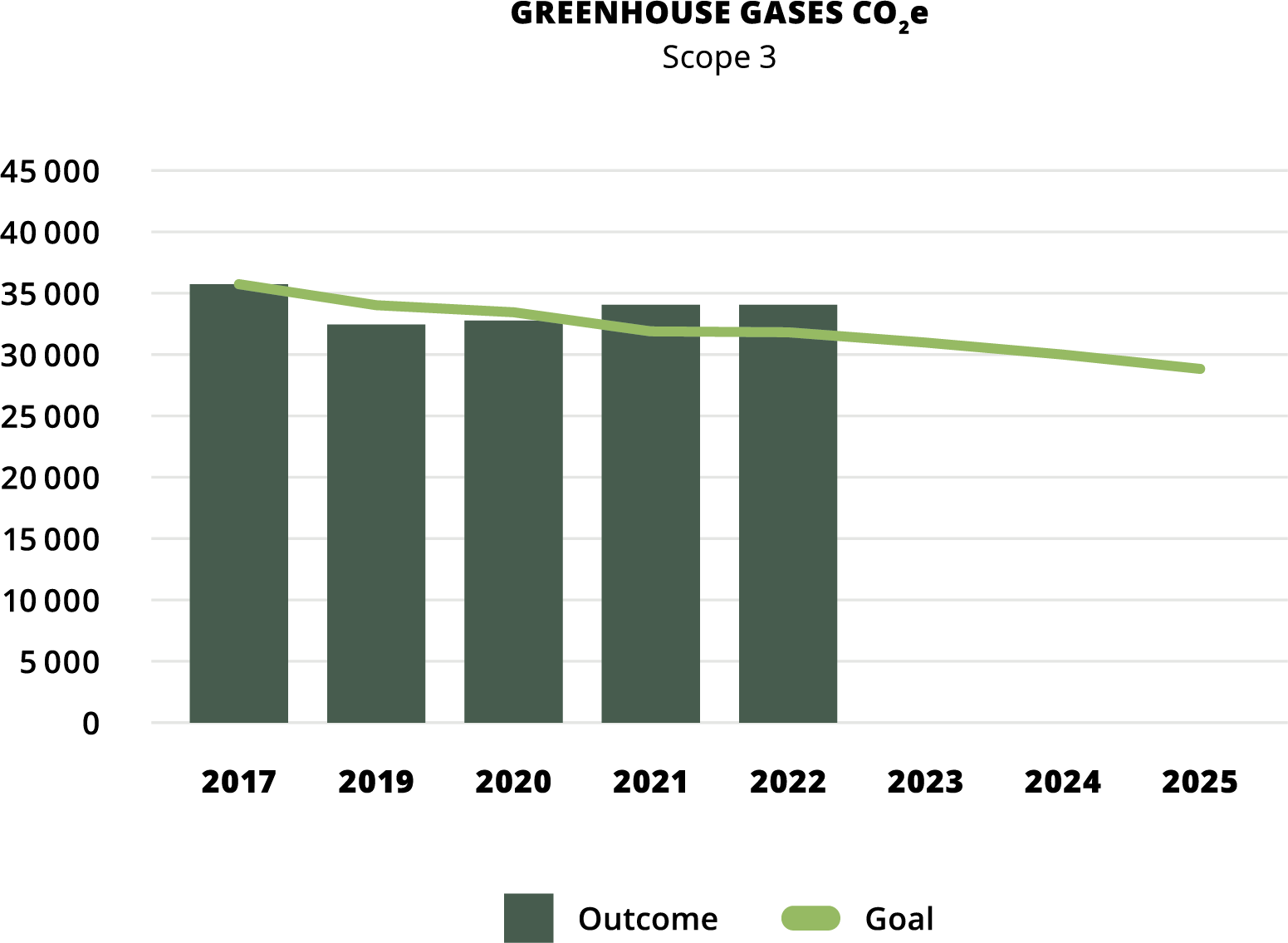Reduce emissions we don’t control ourselves
We have set a goal of reducing Scope 3 GHG emissions by 20% for the period 2017–2025. These emissions, from potato cultivation (including production of input products), production of process chemicals, packaging, and transports (Scope 3) represent the majority of our carbon footprint, but are also more difficult for us to affect than the direct emissions from our production.
Thus far we have succeeded in reducing emissions by 4% since 2017, but because a large share of this is related to our production volumes, it is difficult to achieve reductions while maintaining or increasing production. We continue to streamline our resource use and during the past year we made an important decision to phase out the use of propylene oxide, a chemical substance which, in addition to having a negative effect on our process wastewater and the working environment also has a relatively large carbon footprint.
During the year, we have also acquired better information about our growers’ use of fertilizer and fuel, which are important factors in the potatoes’ carbon footprint. Read more on page 43. Changes are also underway in terms of how the carbon footprint of agriculture should be calculated, and these may affect the results in the future.
Water resources – an issue of the future
Water supplies in Sweden are still good, and because the vast majority of the water we consume in our starch production is then used to water crops in the field, we haven’t previously focused as much on water efficiency as energy consumption. All of the water used to wash the incoming potatoes is collected in ponds at our facilities and then piped to local growers around the facilities. Condensate from evaporation of the juice from the potatoes during protein manufacture is infiltrated into the ground adjacent to the facility.
However, climate change is also expected to mean reduced access to water in Sweden, and therefore to reduce our extraction of groundwater we are working on returning clean water flows between different steps in our processes. In the new facility at Mjällby, we have been able to implement major water optimizations, and water consumption per tonne of produced commercial starch is around 25% lower there. But at the facility in Nöbbelöv, water savings are a balancing act because some wastewater from processing is piped to the municipal treatment plant. When we return more water to our process, we reduce the quantity of water in the waste, with the risk of creating high levels of organic content. Processing in Mjällby does not produce any wastewater, which gives us completely different opportunities.




